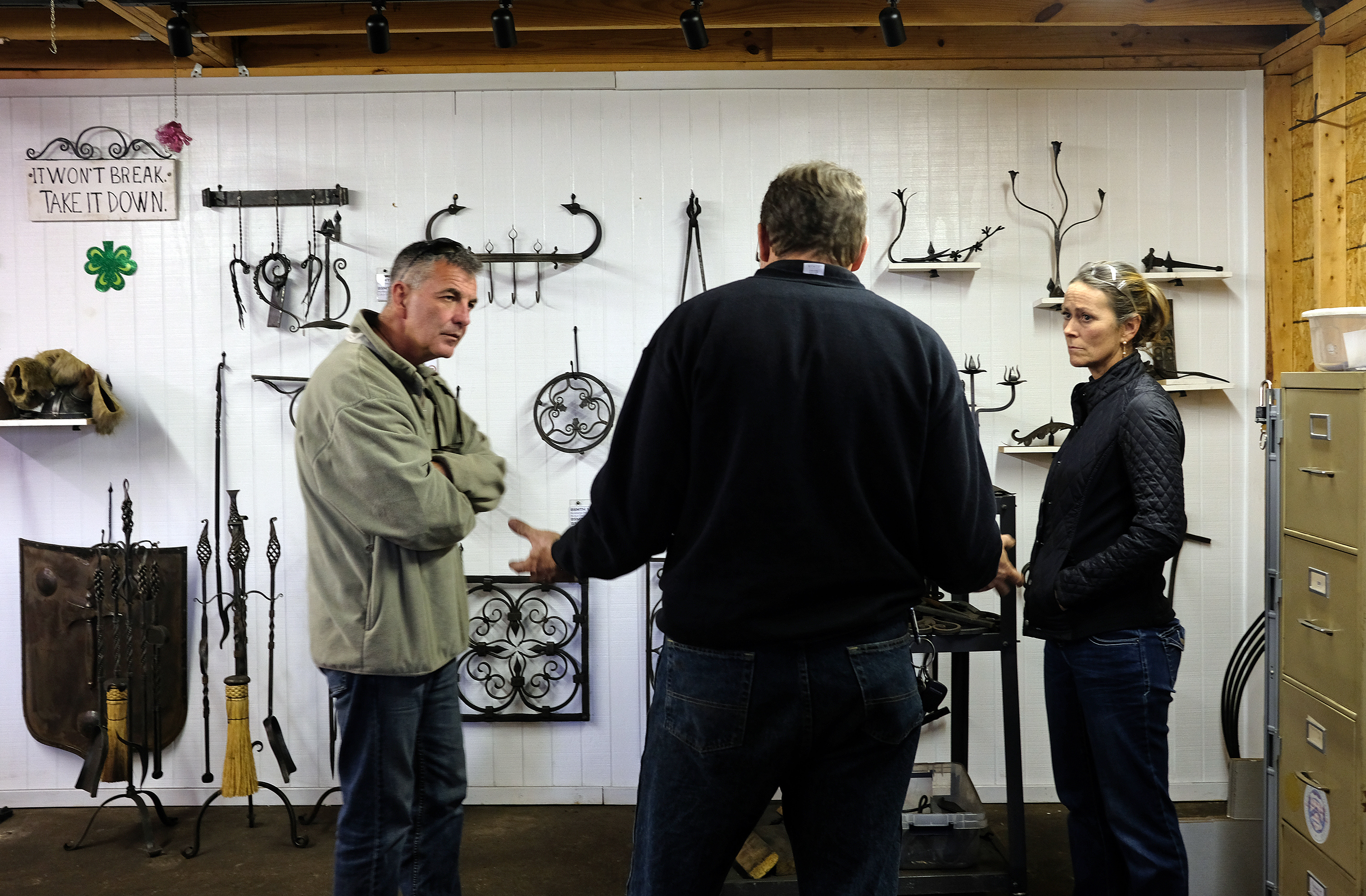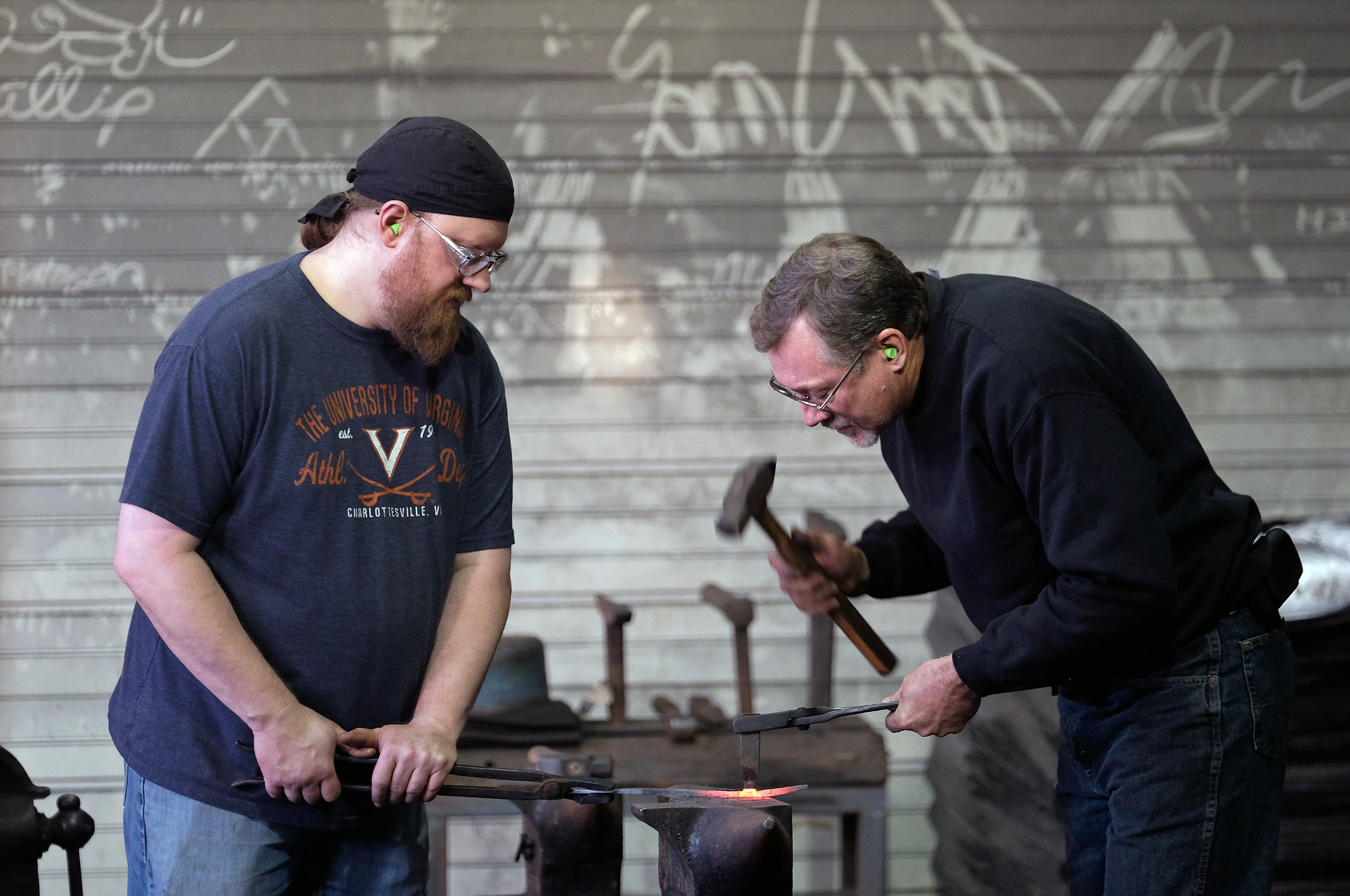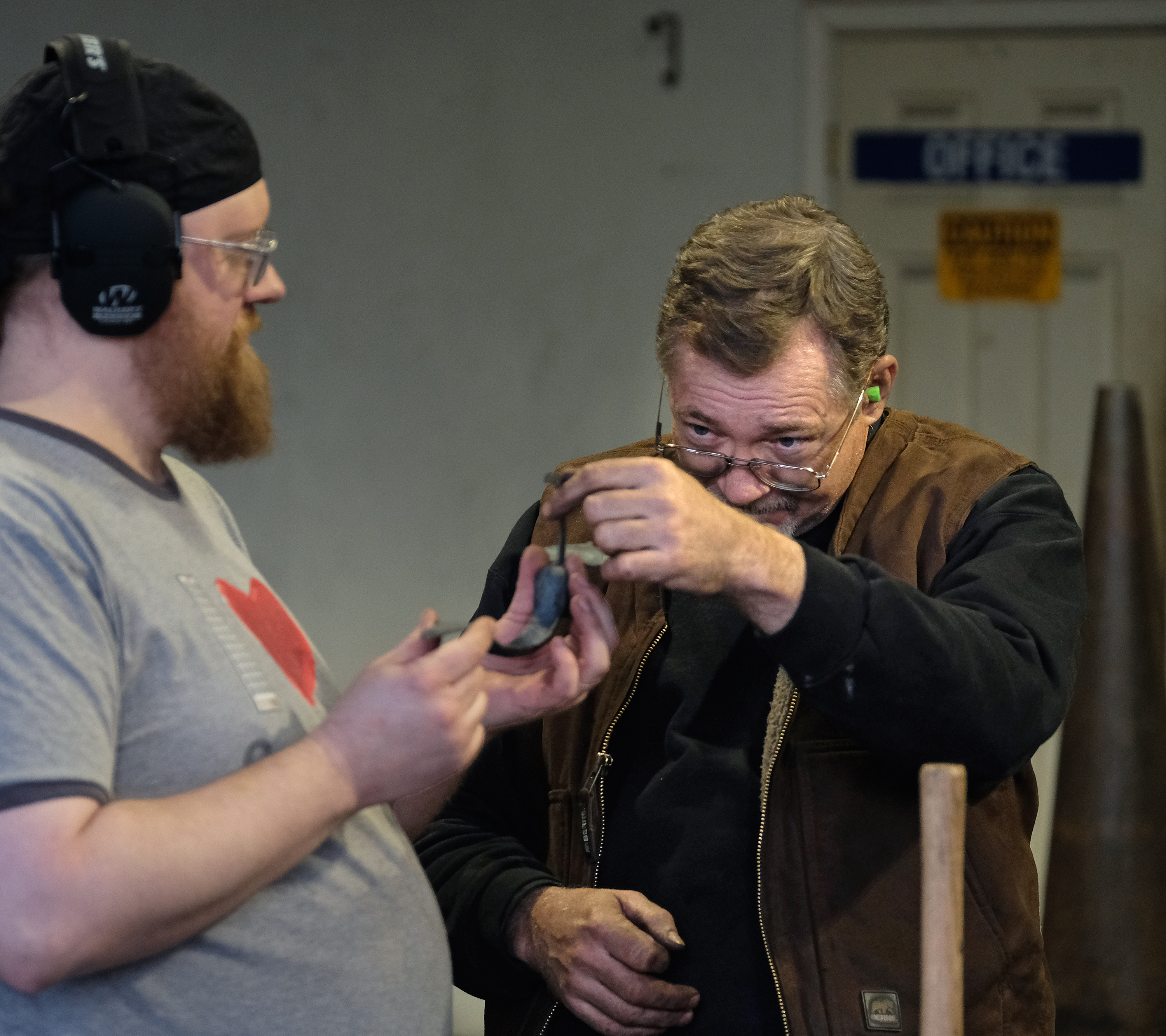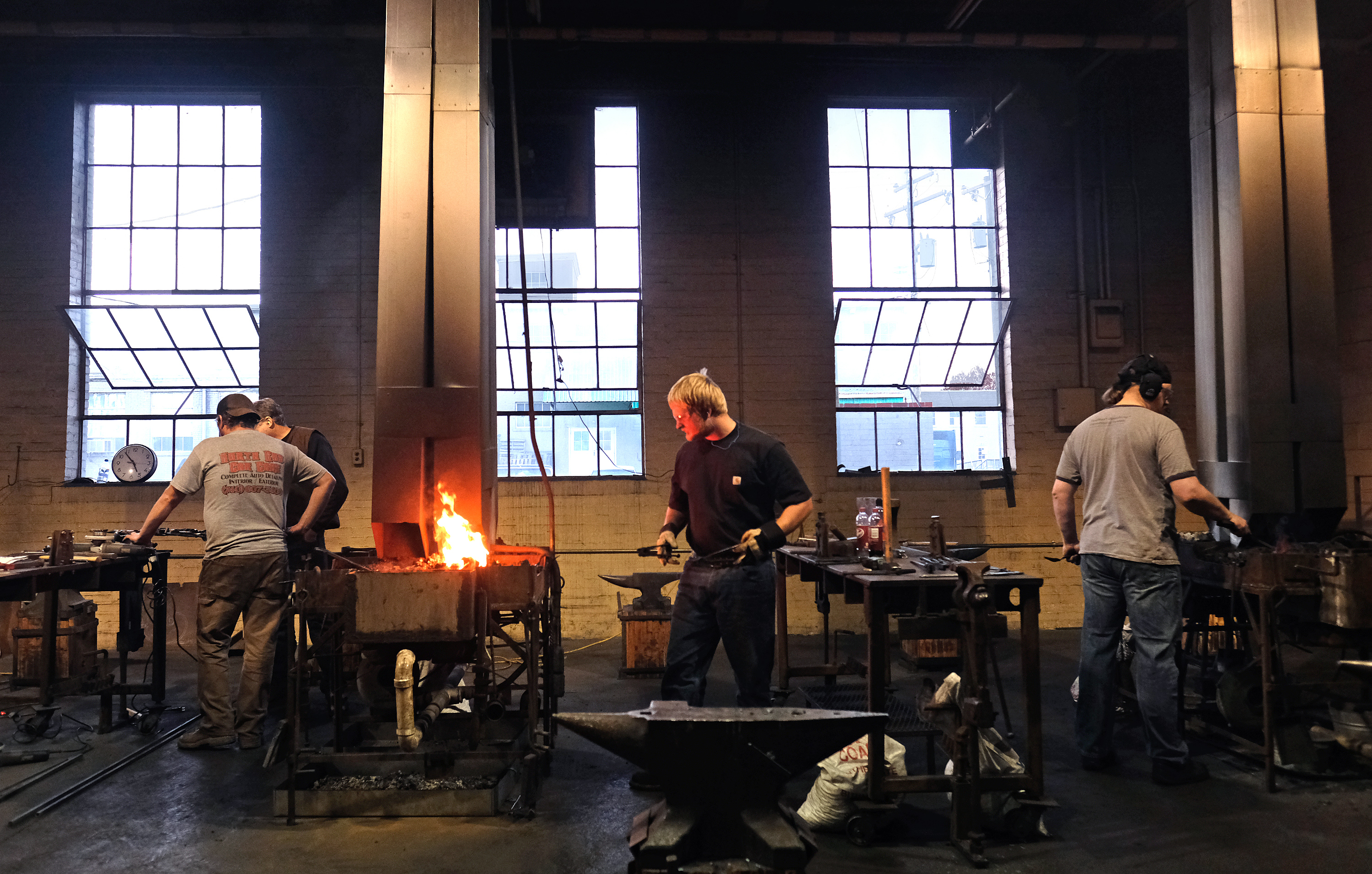
Dale Morse of Virginia Institute of Blacksmithing talks with Tom and Shannon Slayton who were visiting from Kents Store, Va. Photo by Norm Shafer.
On the first Friday of every month, an eclectic band of hammer wielders descend on the South River Complex in Waynesboro. They come from many corners – one man moved to Virginia from Texas for the certificate program in Artistic Blacksmithing, others hope to become historic reenactors, independent blacksmiths, industrial fabricators, or simply dedicated hobbyists. For the afternoon, they’ll all be found in a shared, educational forge – surrounded by natural light, old industrial windows, and historic hand tools – learning together how to turn cold, raw metal to something warm, functional, and soft in its artistic curves.

Student Keith Zimmerman gets help on a project from Dale Morse of Virginia Institute of Blacksmithing. Photo by Norm Shafer.
A Wide Path that Wanders Home
The journey toward the Virginia Institute of Blacksmithing began when Dale Morse was nine years old, working with his sister at the Booker T. Washington National Monument in Franklin County, Virginia. He fell in love with his craft there and still returns annually to share his skills.
His childhood passion eventually took him to the Penland and John C. Campbell craft schools, to Vulkanschmiede in Aachen, Germany, and to Gabrielle Curtolo’s studio in Venice, Italy. He founded his first blacksmithing shop in Warren Wilson College in Swannanoa, North Carolina, where he also studied Business Administration. He wound his way back to Virginia by starting Clay Hill Forge in Charlottesville, along with co-founding the Virginia Institute of Blacksmithing with former student and now current co-instructor David Hall.
Throughout all his travels, it’s clear his life and craft have remained a search for a paradoxical balance: how to work with materials as durable as iron, while creating forms as soft as circles? How to create space for the beauty of objects to shine, while ensuring function and usability? How to teach in a way that instructs, while also freeing creative potential?

Student Keith Zimmerman gets advice on building a latch from Dale Morse of Virginia Institute of Blacksmithing. Photo by norm Shafer.
Working with the Hands and the Mind
As Dale shares his vision for the school, he draws strongly on the words of his original mentor, Booker T. Washington and the National Monument in his memory. Dale explains that they work to train the hand and also the mind.
“My philosophy is this isn’t just beating hot metal. There’s an intellectual component that has to go with craftsmanship,” says Dale. “I try not to make minions. I try not to give them my design sense. I do teach some classic styles, but I try to help them develop their own visual voice.”
Courses at the Institute include weekend workshops to build spears, hatches, and helmets, or more traditional fireplace tools, floral forms, and bookshelf brackets. They also offer welding classes, as well as their signature year-long Artistic Blacksmithing program, certified by the State Council of Higher Education as a Career and Trade Program.
Dale’s advice to aspiring blacksmiths spans a commitment to teaching modern business skills with a love for historic knowledge and practice. He pulls a compass out and demonstrates hand-based skills to bisect a circle in thirds, fifths, and sixths, all without using numbers or calculators. For him expert skill remain a marriage of the hand and the mind – knowledge resides in the body, and muscle memory combined with thoughtful inspiration remains the source of quality craftsmanship.

Students work at the forges at the Virginia Institute of Blacksmithing. Photo by norm Shafer.
It Could Only Happen Here
Asked why the Virginia Institute of Blacksmithing lives in Waynesboro, Dale’s reply is simple and to the point: “We couldn’t not be here.”
Dale originally moved both his personal blacksmithing shop and the Institute to Waynesboro because of the attractive expansion costs for quality industrial and manufacturing space. But quickly, financial considerations grew to a feeling of home.
“I love it here,” says Dale. “I’m never more than 10 minutes away from anything I need. The typical traffic jam lasts about 30 seconds.” In addition to space that’s affordable enough for a school and shared work areas, the industrial heritage of the City has offered up machinist shops and specific business destinations such as Powder Coating Solutions, Wayne Oxygen, and Lowes. Zoning and other local government regulations have also proven more welcoming to the Institute’s needs and desires.
Here, says Dale, “folks really are friendlier.”
To learn more about the Virginia Institute of Blacksmithing, you can view their class schedules, certificate programs, and instructor bios at https://vablacksmithing.org To learn more about the businesses and entrepreneurs who are forging Waynesboro’s local economy, check back at www.growwaynesboro.com/meet-them for stories and start-up opportunities.
Dale, This is awesome. I’m so glad you have found Waynesboro to be home. Welcome to the community. Keep up the great work.